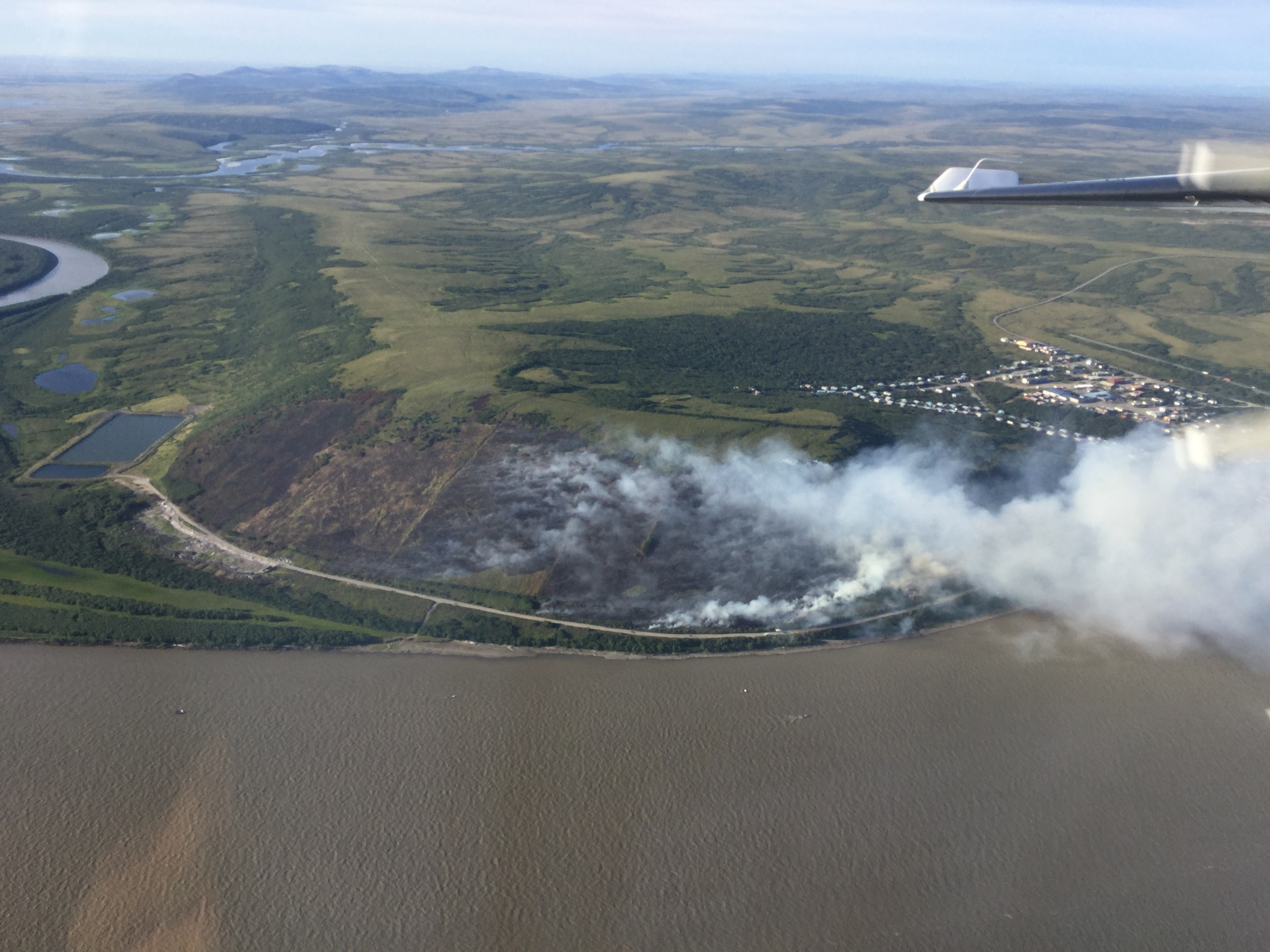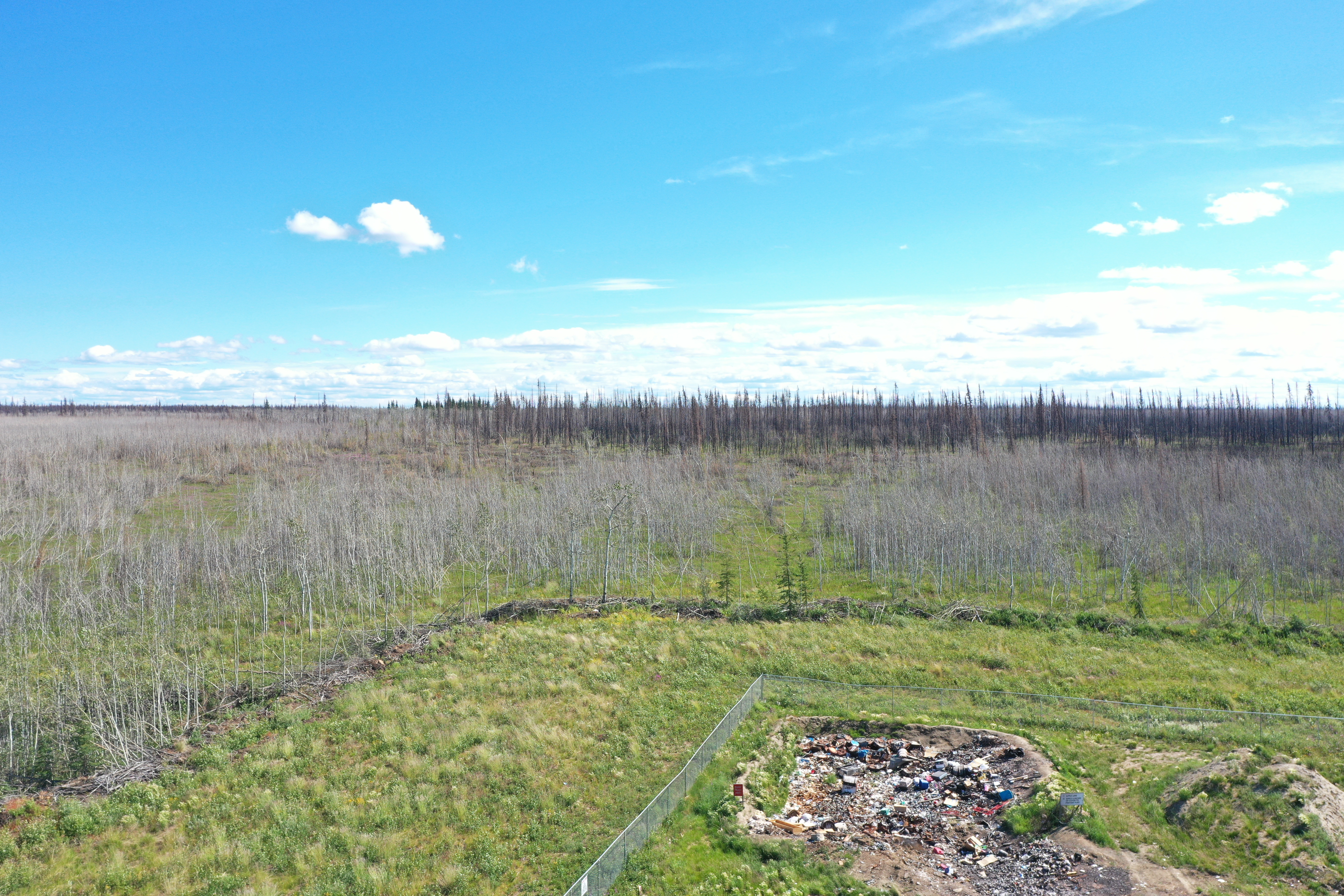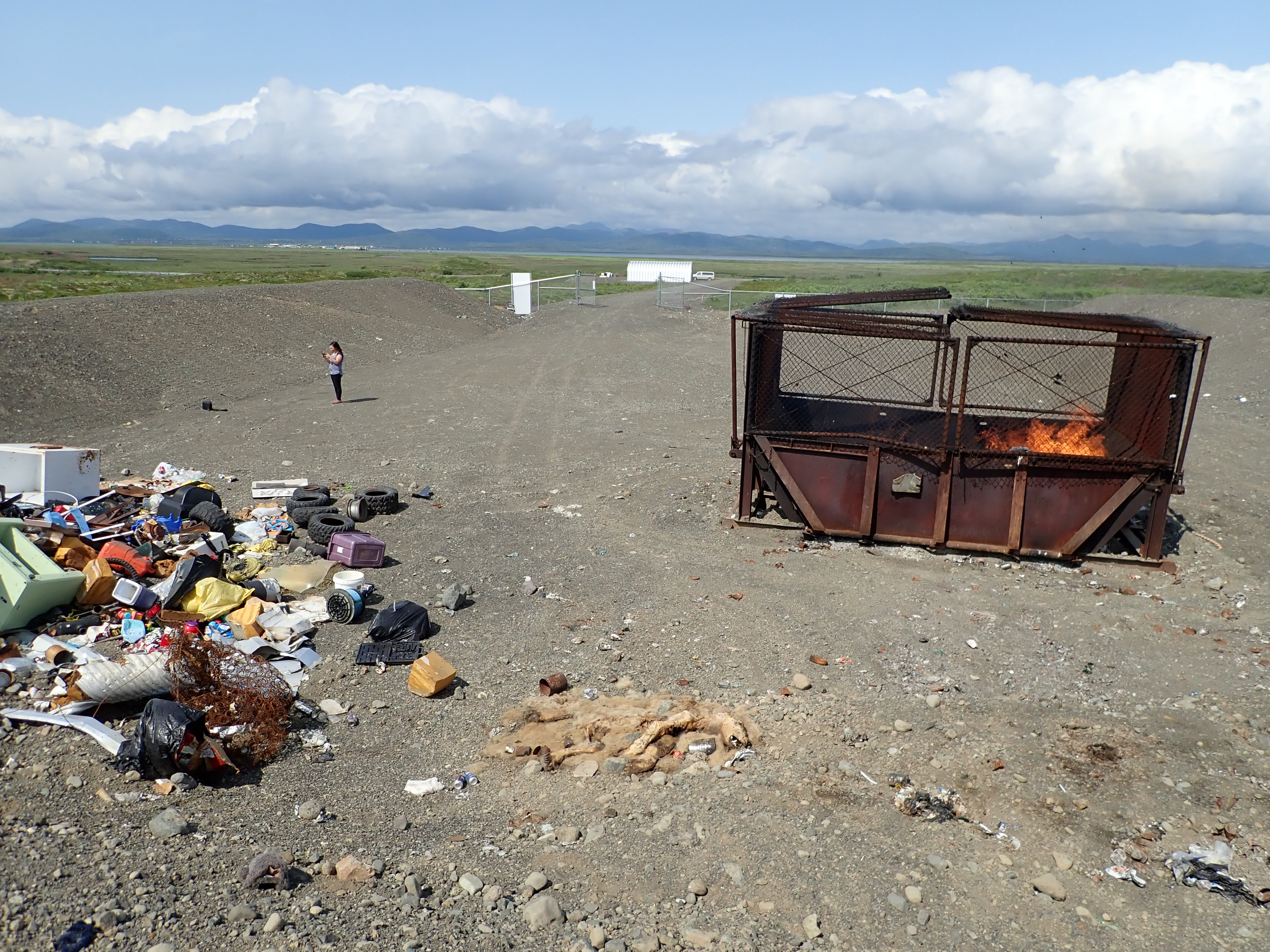Fire Season

Wildland fires are never a good thing, but they can be especially harmful if they come into contact with your landfill.
Wildland firefighters will NOT enter the landfill to put out the fire. Their equipment and safety gear are tailored for fighting forest fires and brush, not for putting out burning waste and hazardous materials.
What these firefighters do is inherently high risk, high consequence. Landfill fires add to this risk by exposing crews and community members to toxic smoke.
Burning solid waste is a common practice in rural Alaska and, when done properly, can be an effective solid waste management tool. However, improper burning can and has led to wildfires. These fires threaten community infrastructure and residents.
2025 Updates
Alaska DNR Division of Forestry burn permits are no longer required after August 31, 2025. Other restrictions may apply. Visit the Alaska Wildland Fire Information's Fire Restrictions page to determine the most recent restrictions for your area. Note you should always practice safe burning practices.
You can find up-to-date information on wildland fires across the state on the AK Interagency Coordination Center site.

Landfill caused wildfire threatening community
Wildfire Directly Caused by Waste Burning
This photo is an example where fire from burning trash on the ground escaped the landfill and resulted in a wildfire. The fire swiftly ran up and around the hillside directly towards the community.
After many days of work, federal and state firefighters were able to stop the fire from reaching homes. The fire burned over 70 acres with a cost of almost $500,000 by firefighting agencies.

Firebreak outside landfill perimeter
Prepare and Plan
- Clear all brush and dead vegetation within 90 feet of the landfill perimeter
- Clear all vegetation within 25 feet of the burn area
- No burning may take place during a statewide or local burn ban, unless authorized by your Division of Forestry Area Office or the Alaska Fire Service 907-356-5511
- Create a plan for how you will manage waste if there is a long-term burn ban. Unburned waste takes up significantly more volume
- Do you have enough landfill space?
- Do you have enough space in your trench or should you dig a new one?
- Gather or purchase fire suppression material. It must be at the landfill during any burn. This could be fire extinguishers, wildland fire pump, firefighting skid sprayer, etc.

Waste stored away from burn unit
Proper Burning
- No burning trash on the ground unless your landfill permit specifically allows for controlled burning in a trench
- All burning must be conducted in a fully-functional burn unit or in a designated trench as allowed by the landfill permit. Damage to any burn unit components must be repaired as soon as practical
- Do not store waste within 25 feet of the burn unit (or trench) as it could catch fire
- Keep waste as dry as possible using a cover or storage facility
- Separate household hazardous waste and other materials that should not be burned, including pressurized containers (aerosol cans, ammunition, propane cylinders, etc.) from garbage that will be burned. All material that cannot be burned should be disposed separately at the working face (main disposal area) or collected and backhauled to an appropriate disposal or recycling facility
- Only the landfill operator may light the burn unit and must remain at the landfill or burn area until the burning is complete
- Only burn during favorable weather with wind blowing away from the community; do not burn in high winds
- Do not allow waste to smolder and ensure that ash is completely cool before placing at the working face

 Indicates an external site.
Indicates an external site.